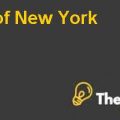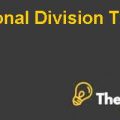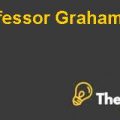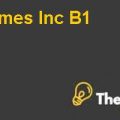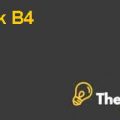
Answer 1
The case study outlines the emergence of battle between two companies of aseptic packaging within the Chinese market. One company is an established veteran Tetra Pak, and the other was GreatView, which aimed to break through the monopoly of Tetra Pak and carve out their market share in the emerging market. Tetra Pak entered the world markets in 1979 and since then it built and sustained its share by using a series of marketing strategies namely tying and bundling. Patenting their discoveries and realizing the importance of research also made their base stronger and gave it longevity.
Tetra Pak enjoyed ultimate stronghold on the Chinese market since 1979 till the entry of GreatView in 2003 as a direct competition. The entry of GreatView was, unfortunately, timed for Tetra Pak as the antitrust laws wobbled otherwise they were thought to be concrete by lowering their market share. Keeping this scenario, it will be easier to identify the sources of competitive advantage that GreatView has identified.
A competitive advantage is what makes Tetra Pak’s organization standout from the rest of their rivals, and this is the reason why customers prefer Tetra Pak to the providers of the same service. This competitive advantage needs to be communicated to the customer’s specific, and they may revolve around what Tetra Pak produces, the target market and the competition they are dealing with. GreatView has the competitive advantage of being able to offer a lower price in comparison to the offering of Tetra Pak even though they have better understandings with the suppliers and because of the monopoly they were able get better rates.
Using Porter’s five forces analysis, it can be easily determined where the competitive advantage lies within GreatView. GreatView had no threat of new entry since they were the threat towards Tetra Pak as they took advantage of the weak patent laws and the antitrust campaign against them. Whilst, Tetra Pak had four forces as an advantage in terms of supplier power such as, being able to lock the suppliers with them. Buyer power also counts as an important factor here as the fewer the buyers the more they can dictate their own terms; however, in this case there are a large number of buyers. Hence, the company is in control.
As mentioned above Tetra Pak enjoyed complete monopoly until the arrival of GreatView so that it had no worries regarding competitive rivalry as there existed two rival parallel to them. Coming back to GreatView they had another competitive power in terms of posing a threat of substitutions they provided the different way of aseptic packaging using blank fed machinery which had a different mechanism of running to roll-fed machinery, but produced similar results, being able to provide both sets of technology, later on in their development allowed GreatView to be a more diverse company.
The new entrants also provided components which were compatible with the machines of Tetra Pak and refurbished their old machines which diluted the monopoly of Tetra Pak and allowed buyers a substitute where they could purchase the same products but at cheaper rates. These competitive advantages of being a new entrant and providing a substitute are both short term advantages which would lose their influence soon due to the stability of their biggest rival, Tetra Pak. One of the competitive advantages that will sustain the success of GreatView is the leadership behind it, i.e. the two former employees of Tetra Pak themselves who saw the customers need for more variety and sought an entrepreneurial advantage.
This advantage can be best understood by using Watkins 7 seismic shifts which a leader should undergo when they shift gears from leading a function to leading a whole enterprise. The duo had the added advantage of knowing the inside workings of their biggest rivals and therefore, knew exactly where the faults were hidden in the giant. The two seasoned employees had to shift from being a specialist i.e. running a single function and having a very limited scope of concern, and work to becoming a generalist i.e. running the whole enterprise and overseeing all its prospects.
This was even more important as they started with a management buyout which meant that they had motivated the workforce and reshaped them completely. This generalist attitude of the leaders behind them would enable them to regulate every aspect of the organization continually...............................
This is just a sample partial case solution. Please place the order on the website to order your own originally done case solution.


